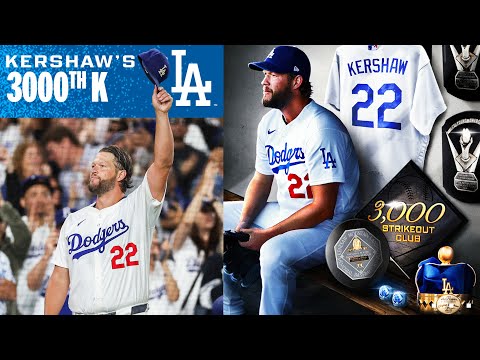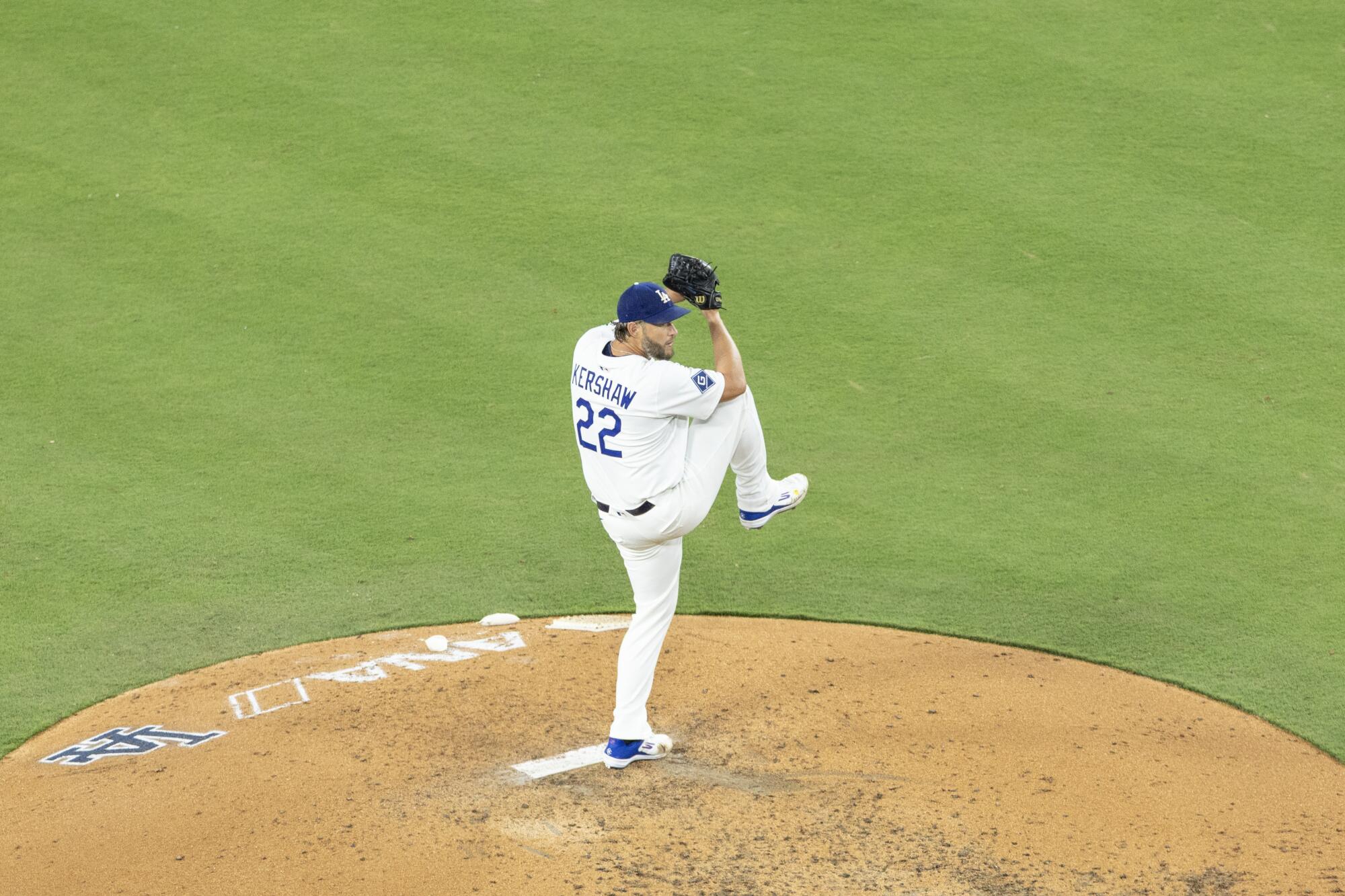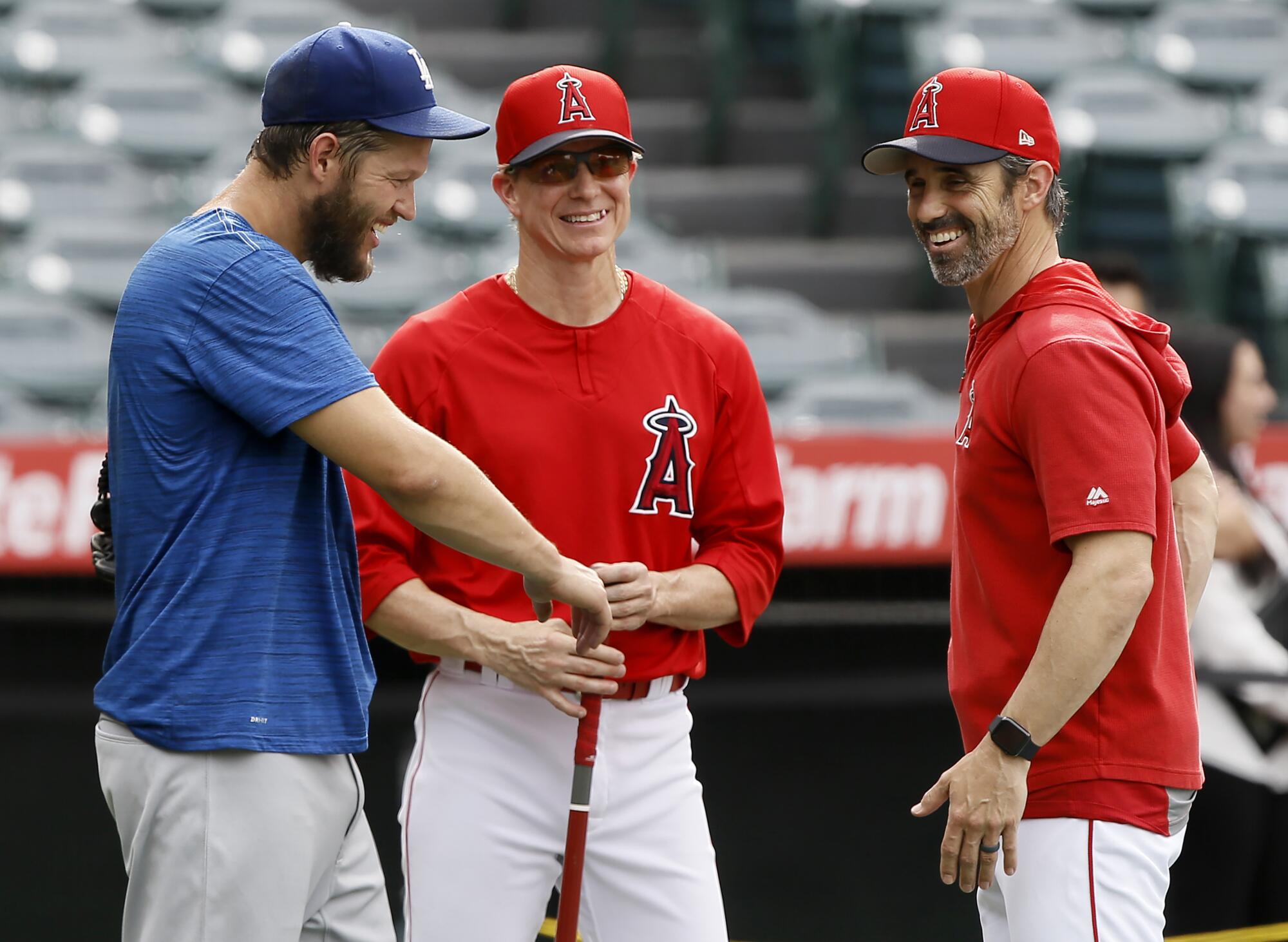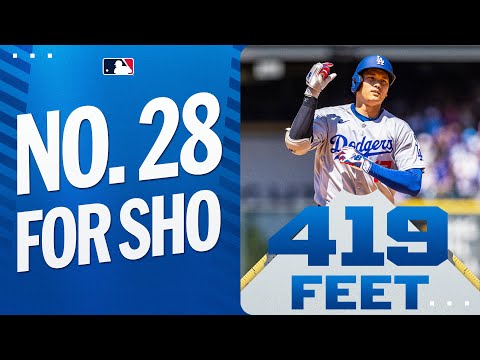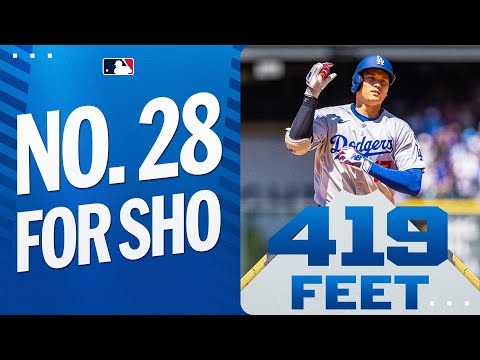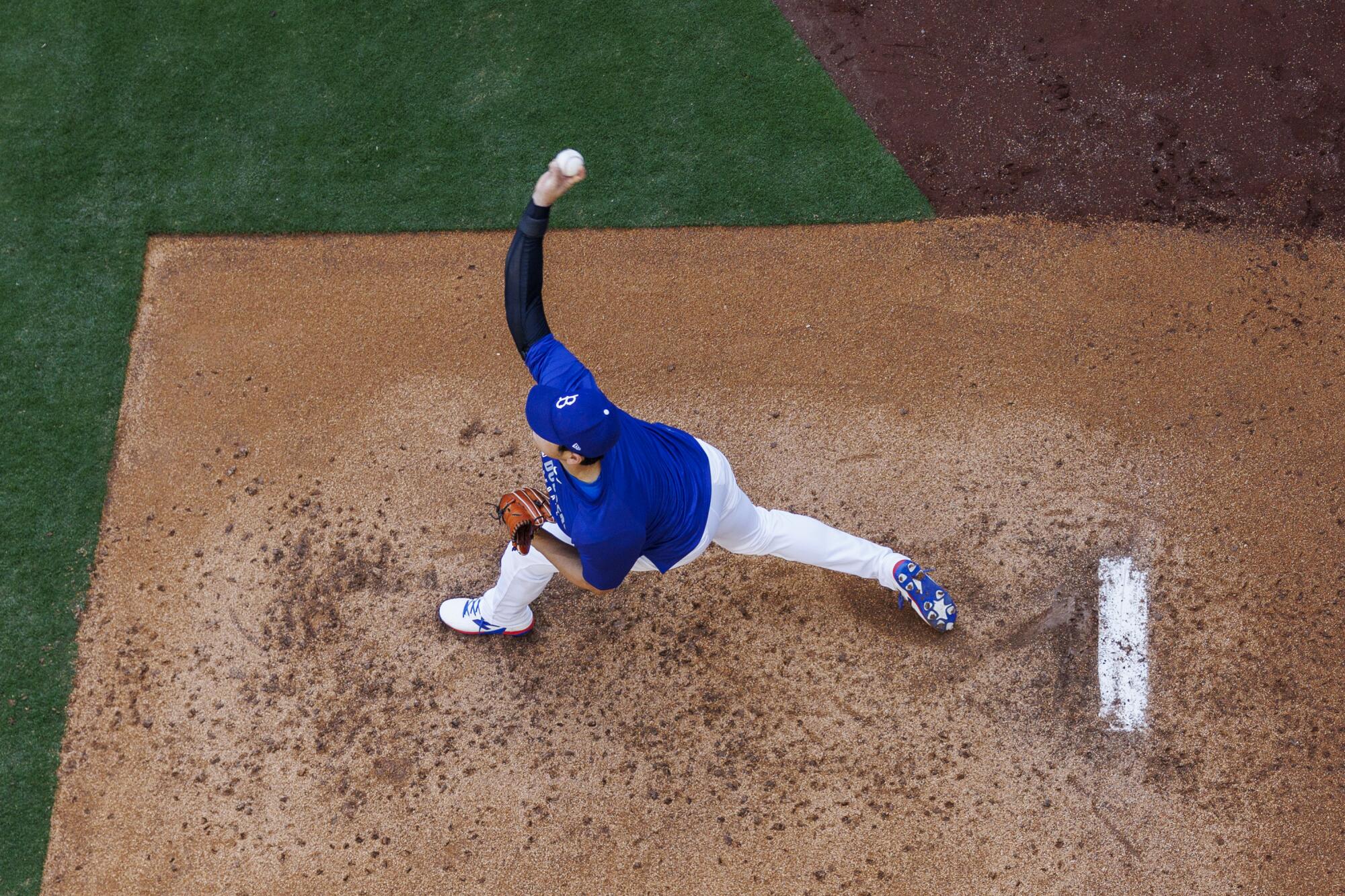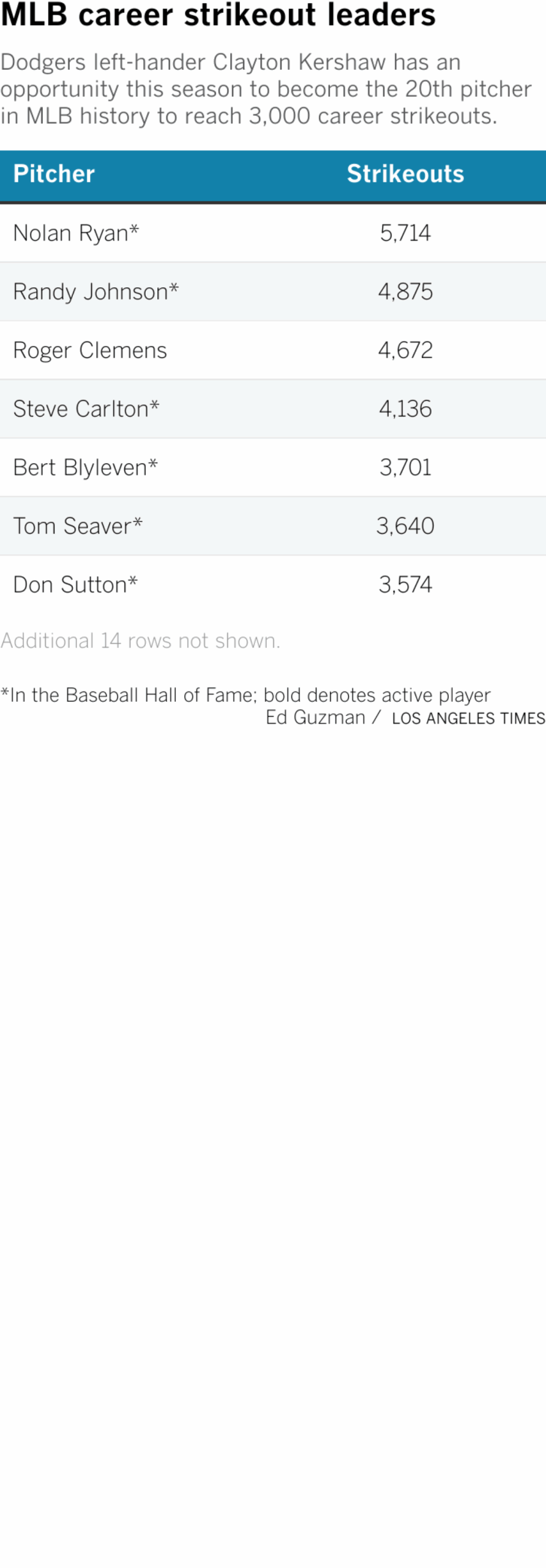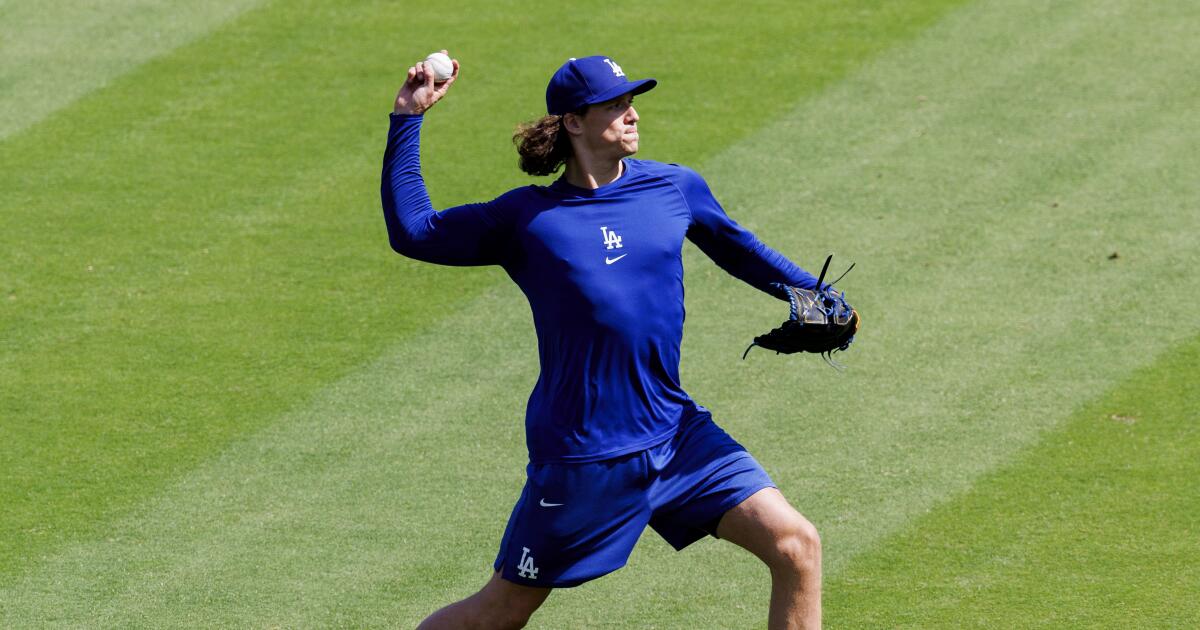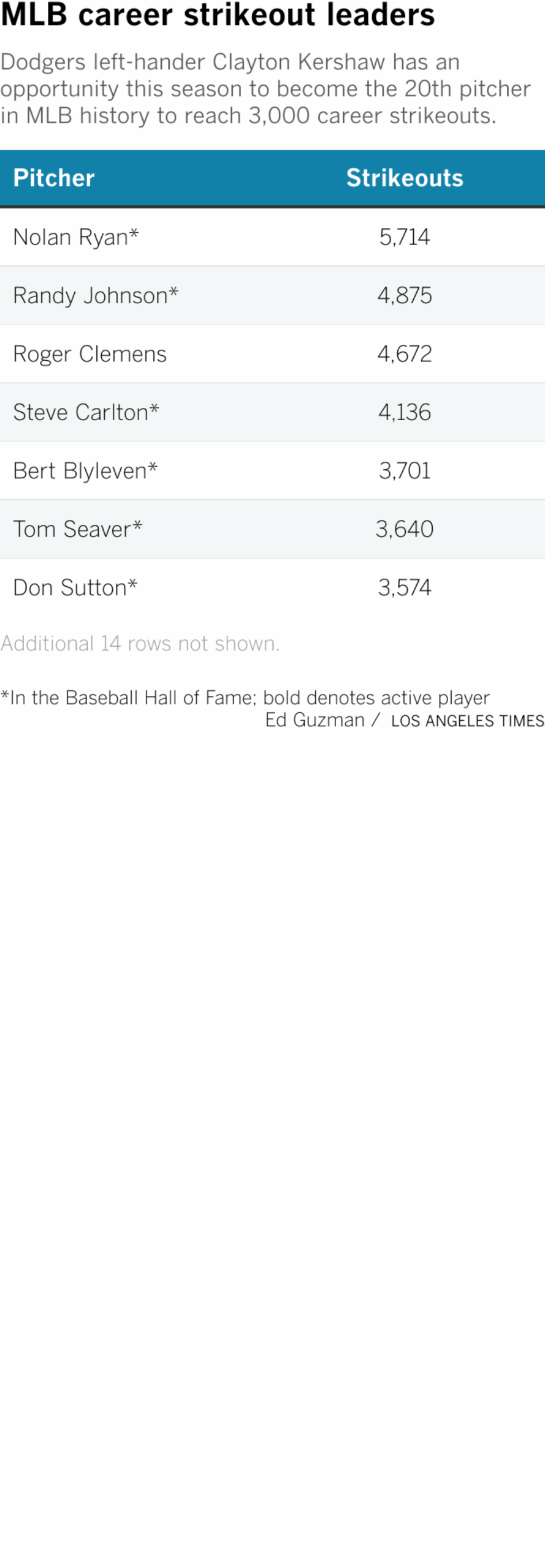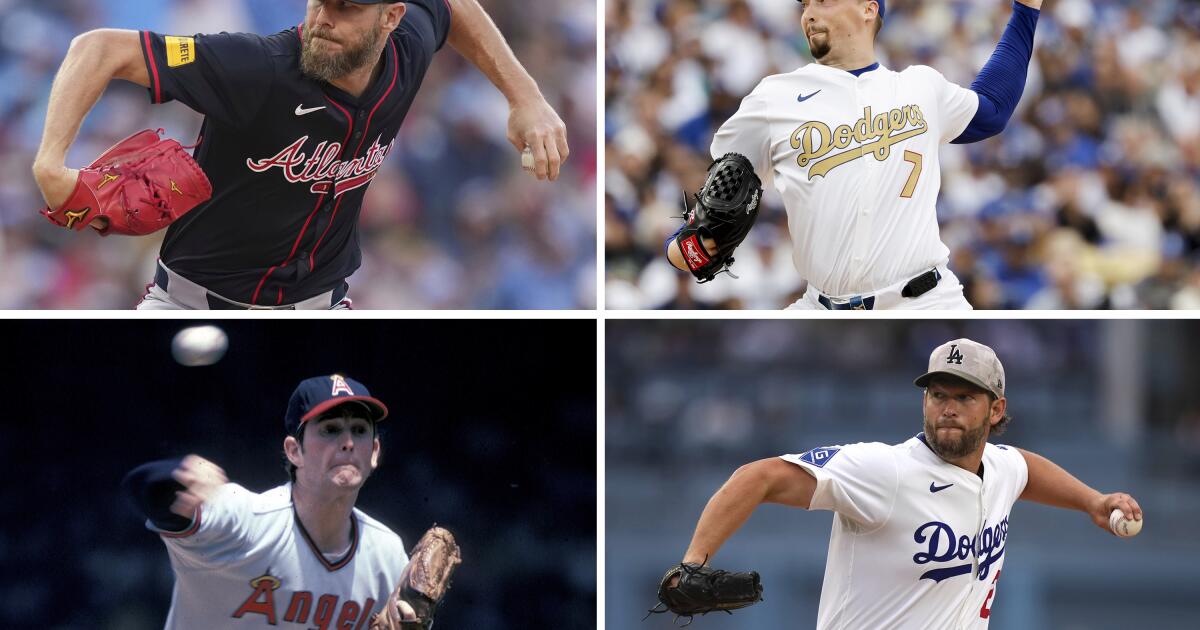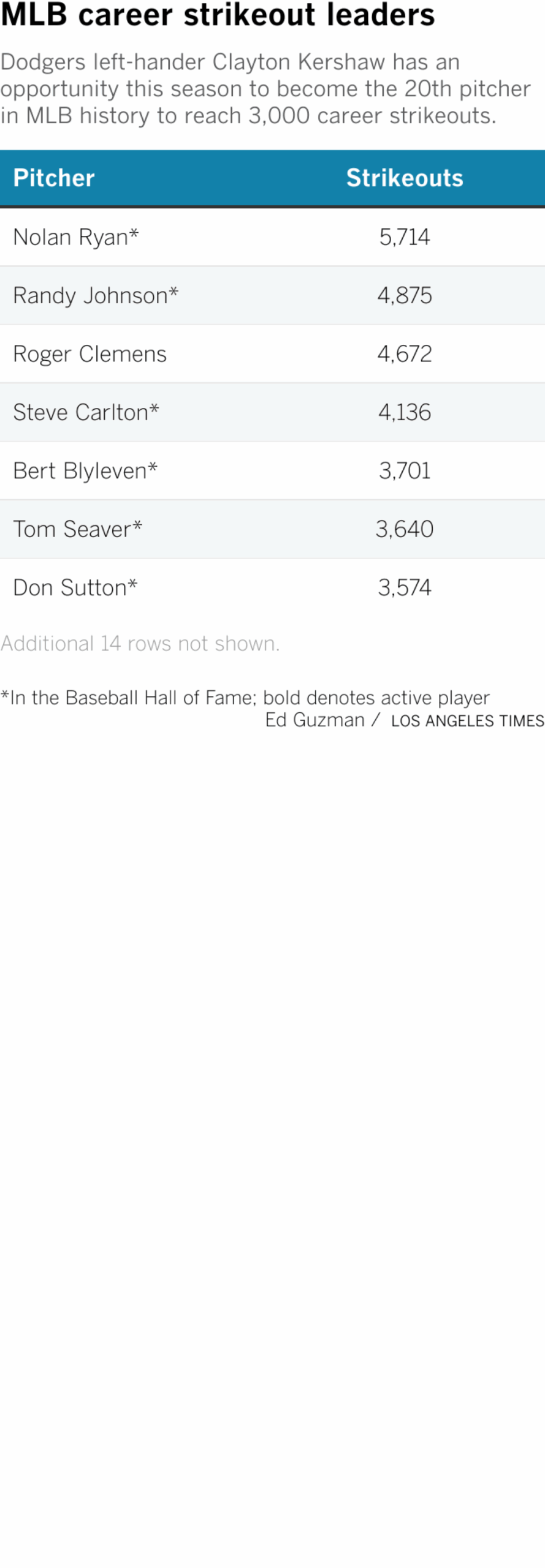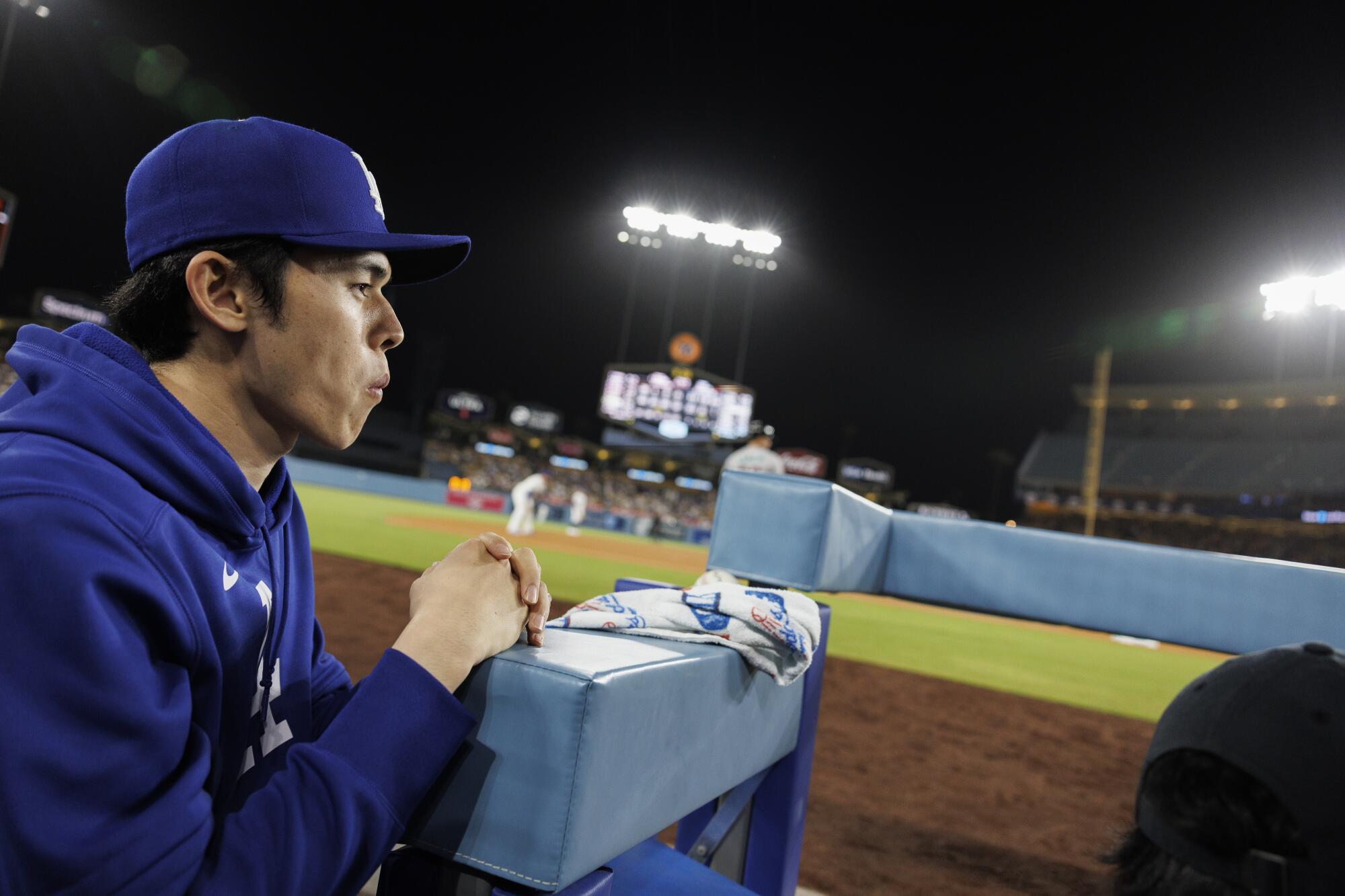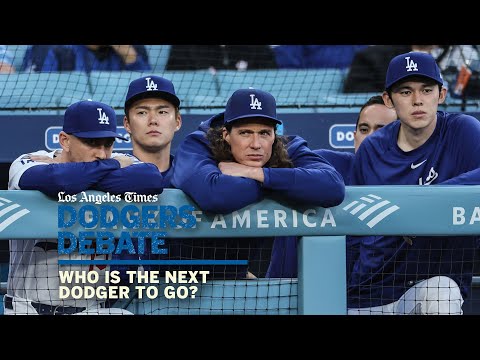Clayton Kershaw, Dodger teammates bask in glow of 3,000th strikeout
It wasn’t so much the culmination of a career as it was another signpost pointing the way to the Hall of Fame.
It certainly wasn’t the last pitch Clayton Kershaw will ever throw for the Dodgers, but it will likely be among the most memorable.
Because when Chicago White Sox third baseman Vinny Capra took a 1-2 slider for a strike to end the sixth inning Wednesday night, Kershaw became just the 20th pitcher in major league history to record 3,000 strikeouts.
More people have flown to the moon than have struck out 3,000 major league hitters. And for Kershaw, who has been chasing history since he threw his first big-league pitch as a skinny 20-year-old, entering such an elite club will be a big piece of his legacy.
Only now he has the wisdom and the grace to realize it was never about him in the first place.
“It’s an incredible list. I’m super, super grateful to be a part of it,” Kershaw said. “But if you don’t have anybody to celebrate with, it’s just doesn’t matter.”
Kershaw would know since he’s one of the most decorated players in history. Twice a 20-game winner, a five-time ERA champion and two-time world champion, he’s won three Cy Young Awards, was a league MVP and is a 10-time all-star.
“The individual stuff,” he repeated “is only as important as the people around you.”
So while Kershaw stood out when reached the 3K milestone on the 100th and final pitch he threw in the Dodgers’ 5-4 win, he refused to stand apart, pausing on his way off the field to point at his family sitting in their usual seats in the front row of the loge section. He then accepted hugs from teammates Mookie Betts and Kiké Hernández.

But he saved his warmest embrace for manager Dave Roberts, who bounded up the dugout steps to greet him.
“We’ve been through a lot together,” said Roberts, who has guided Kershaw through doubts and disappointments, through high points and lows in their 10 years together.
“I’m one of the few people in uniform that has been through them,” Roberts said. “That was kind of what the embrace was.”
Kershaw, 37, is just the fourth left-hander to reach 3,000 strikeouts but more important, he said, is the fact he’s just the second in a century, after Bob Gibson, to do it with the same team. No pitcher, in fact, has spent more years in a Dodger uniform that Kershaw.
“I don’t know if I put a ton of stock in being with one team early on,” he said. “Over time you get older and appreciate one organization a little bit more. Doc [Roberts] stuck with me, too. It hasn’t been all roses, I know that.
“So there’s just a lot of mutual respect and I’m super grateful now, looking back, to get to say that I spent my whole career here. And I will spend my whole career here.”
Kershaw struck out the first batter he faced in his Dodger debut 18 years ago, getting the Cardinals’ Skip Schumaker to wave at a 1-2 pitch. It was the first of three strikeouts he would record in his first big-league inning. So even from the start, the K in Kershaw — the scorebook symbol for a strikeout — stood out more than than the rest of the name.
In between Schumaker and Capra, Kershaw fanned nearly 1,000 different hitters, from CJ Abrams and Bobby Abreu to Ryan Zimmerman and Barry Zito.
He’s stuck out (Jason) Castro and (Buddy) Kennedy, Elvis (Andrus) and (Alex) Presley and (Billy) Hamilton and (Alex) Jackson. He’s whiffed (Scott) Cousins and brothers (Bengie and Yadier Molina), a (Chin-lung) Hu and a Yu (Darvish), a Cook (Aaron) and a (Jeff) Baker as well as a Trout (Mike) and multiple Marlins (Miami).
Former Giant Brandon Belt was Kershaw’s most frequent victim, striking out 30 times in 62 at-bats. Fewer than 50 batters have faced him at least five times without striking out, according to Baseball Reference.
Along the way Kershaw’s unique windup, the right knee pausing as he lifts both hands just above his cap, has become an instantly recognizable silhouette for a generation of Dodger fans.
There’s only one other left-hander in team history that can compare with Kershaw, yet he and Sandy Koufax are so different the comparisons are more contrasts than anything.
Kershaw has been brilliant over the entirety of his 18-year career, winning 10 or more games 12 times. He’s never finished a season with a losing record and his career ERA of 2.52 is the lowest of the last 105 years for pitchers who are thrown at least 1,500 innings. Even at 37, he’s unbeaten in four decisions.
Dodgers pitcher Clayton Kershaw walks off the mound after recording his 3,000th career strikeout as right fielder Andy Pages, left, and first baseman Freddie Freeman, right, react behind him.
(Gina Ferazzi / Los Angeles Times)
Koufax was 36-40 with an ERA above 4.00 through his first six seasons. And while Koufax’s career was ended by injury before his 31st birthday, Kershaw has pushed through repeated problems with his back, shoulder, knee, toe, elbow, pelvis and forearm.
Only Don Sutton has won more games in a Dodger uniform than the 216 that belong to Kershaw, who will soon be enshrined next to Koufax and Sutton in the Hall of Fame.
“Early on they were talking about this next Sandy Koufax guy, this big left-hander. Really didn’t have an idea where the ball was going, but pretty special,” said Roberts, who retired as a player after Kershaw’s rookie season. “It’s much better to be wearing the same uniform as him.”
But Roberts has seen the other side, when the young promise gives way to pitfalls. He’s seen Kershaw battle so many injuries, he’s spent nearly as much time on the injured list as in the rotation over the past five seasons. Alongside the brilliance, he’s seen the uncertainty.
So with Kershaw approaching history Wednesday, Roberts loosened the leash, letting him go back to the mound for the sixth inning despite having thrown 92 pitches, his most in more than two years.
“I wanted to give Clayton every opportunity,” he said. “You could see the emotion that he had today, trying to get that third strike. But I think it just happened the way it’s supposed to happen, in the sense that it was the third out [and] we got a chance to really celebrate him.”
Each time Kershaw got to two strikes, something he did to 15 of the 27 hitters he faced, “I said a few Hail Marys” Roberts said.
“It’s the last box for Clayton to check in his tremendous career,” he added, saying he doubted many more pitchers will ever reach 3,000 strikeouts. “You’ve got to stay healthy, you’ve got to be good early in your career, you’ve got to be good for a long time.”
And Kershaw has been all of that.
That, Roberts said, was behind the second long hug he and his pitcher shared in the dugout Wednesday night as a highlight reel of Kershaw’s career played on the video boards above both outfield pavilions. The sellout crowd, which had long been on its feet, continuing cheering, eventually drawing Kershaw back out onto the field to doff his cap in appreciation.
“That ovation,” he said “was something that I’ll never forget, for sure.”
Because who wants to celebrate alone?
